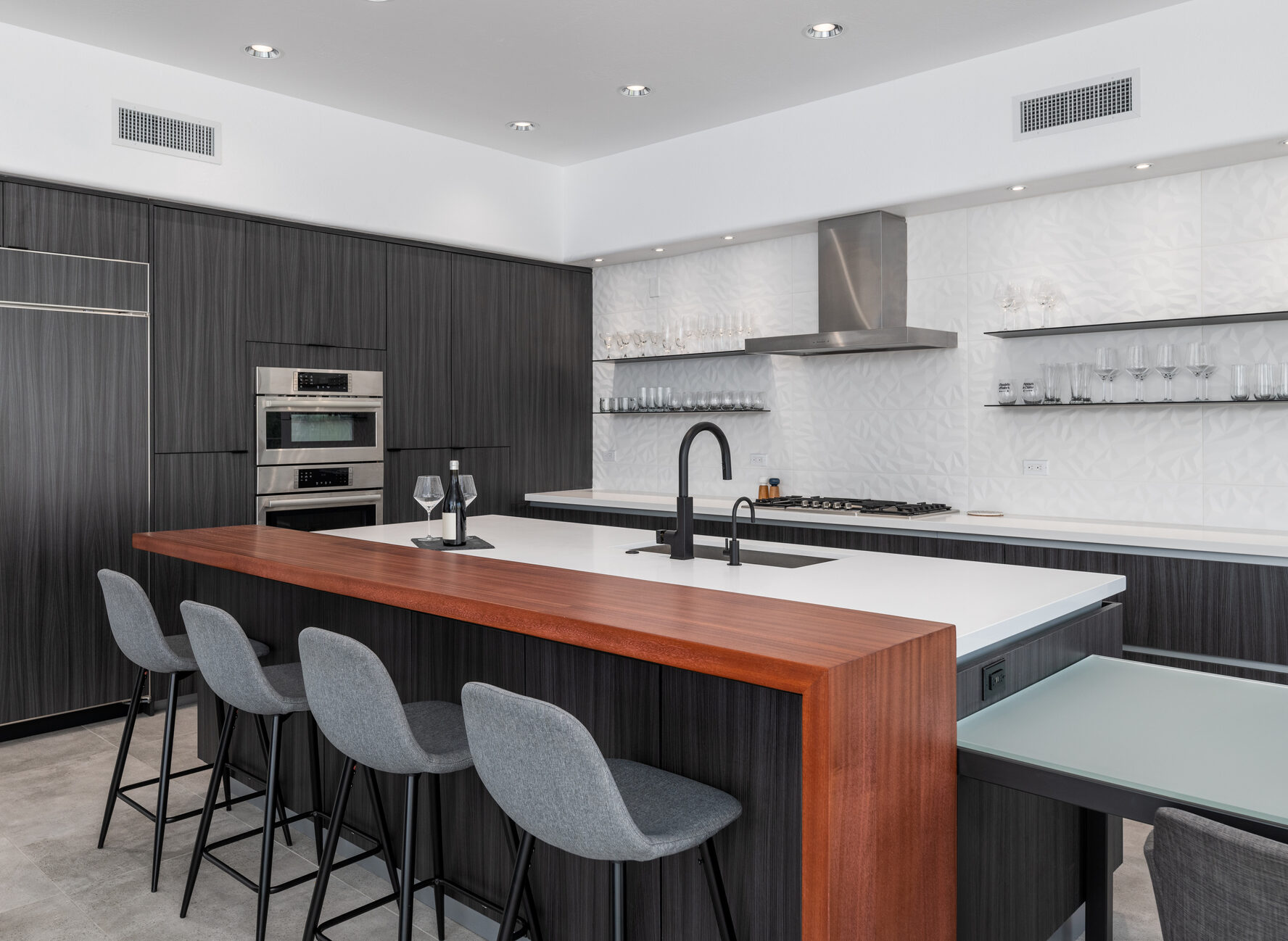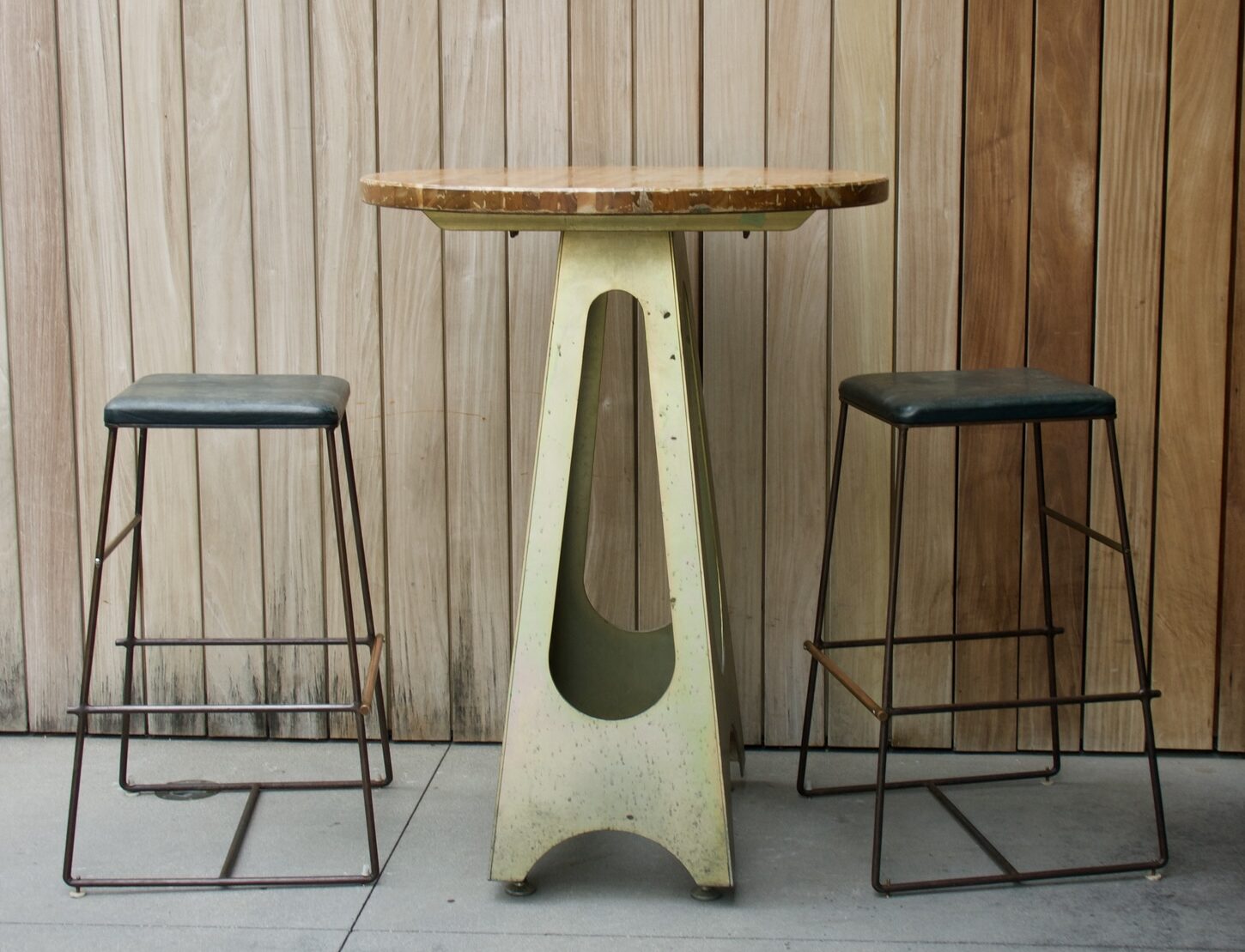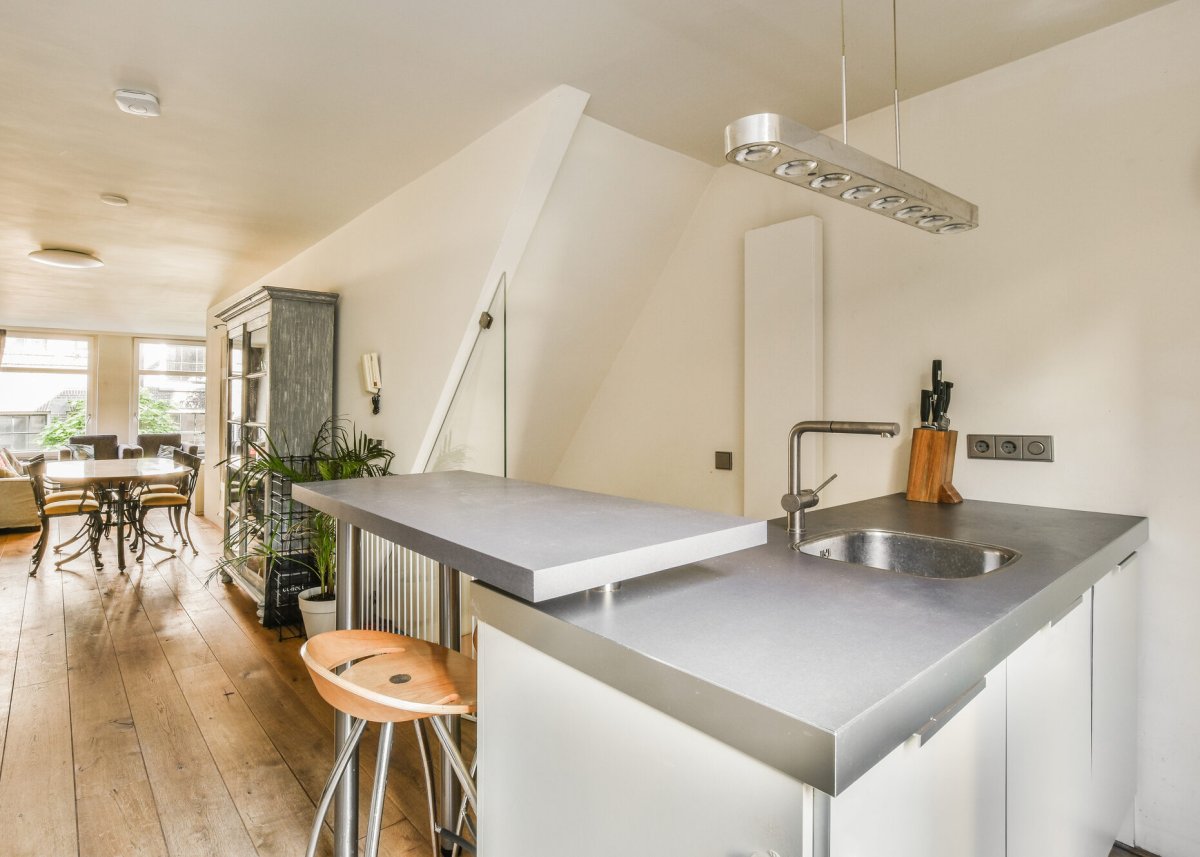We may earn revenue from the products available on this page and participate in affiliate programs. Learn More ›
Choosing between bar-height vs. counter-height bar stools and tables is important to get right in kitchen design. With growing interest in counter-height tables for dining rooms, as well outdoor bar-height tables and bar stools, the subject has taken on even more significance.
Visual appearance is a key issue, but the differences between bar and counter height also impact kitchen functionality. The wrong kitchen counter height can quickly lead to backaches when cooking, while the incorrect bar stool height can make it uncomfortable when sitting down at mealtimes. Here’s how to make the right decision to avoid either scenario.
“Bar height” and “counter height” refer to two different heights—most of the time.
In general, the average counter height is lower than the average bar height. However, when we try to get into specifics, things can get a little complicated. The majority of sources agree standard counter heights are between 34 and 36 inches, but some hold that acceptable counter heights can reach up to 39 inches. Meanwhile, a standard bar’s height will be somewhere between 40 and 43 inches, a much narrower range than counters.
However, in addition to actual kitchen counters and home bars, there are also countertop- and bar-height tables to consider. Several retailers carry products with either label, and these are generally about 36 inches tall. So, in the case of some furniture, counter height and bar height may be used interchangeably. When picking out counter- or bar-height stools and tables, always check the dimensions of each product carefully before making your decision.
Choose between counter and bar height based on your kitchen or dining room’s needs.
The counter height vs. bar height debate has been going on for years but it isn’t really a question of one being better than the other, it’s about which is appropriate in a given situation. We reached out to Shawn Zar, interior designer at Superior Seating for some expert input.
“Consider the atmosphere and functionality you desire,” he said. “Bar height tables and stools are designed to create a more casual, social atmosphere. They’re perfect for creating a vibrant area where people can gather and engage without the barrier of a lower table. On the other hand, counter height is an ideal choice for a multipurpose surface usable for both meal prep and as a dining area, ensuring a cohesive look with kitchen counters.”

Wendy Glaister, member of the American Society of Interior Designers (ASID) and owner of Wendy Glaister Interiors, points out a recent trend for combining heights. “Lately, bar height counters seem to coincide with the application of two materials on a countertop. For example, the sink is placed in the island at counter height with a quartz or stone top, and a wood look bar counter is installed over the top of the quartz to accommodate seating at the island. This achieves separation from the wet surface and it introduces the warm element of wood into the space.”
Bar-height and counter-height stools are different in size, too.
It is generally accepted that for maximum comfort, seat height should be 10 to 12 inches lower than its accompanying counter or table surface. So that means counter-height stools are around 24 to 28 inches tall, and bar-height stools can be about 28 to 33 inches tall.
That hasn’t always been the case, though. Although the exact age of bars and bar stools is unknown, there’s evidence of them going back to at least the 1400s. Old drawings (and later, early photographs) show them with much lower seat heights than in use today. So while a “counter-height bar stool” may sound like a contradiction, they no doubt existed!
Counters, bars, tables, and stools can be custom-built to specific heights
The standard countertop height for kitchens was initially established back in the 1940s when people were generally shorter than they are today, so those who are 6 feet tall or more might find standard kitchen counter height uncomfortable to stand or sit at. Also, before the introduction of modern stock cabinets, kitchens would have been custom-built to suit the height of the homeowner—the same is equally possible now.
However, raising kitchen counter height is likely to have a considerable impact on the cost of kitchen countertops, themselves, as well as cabinetry or kitchen islands. Stock cabinets will probably be too short for a taller countertop, so custom units would need to be made.
Bar height is already quite tall, so in this case custom height may be less necessary.That said, modern interior design has no hard and fast rules, so a shorter or taller bar is always an option.

Bar-height and counter-height tables come with their own pros and cons.
Counter-height and bar-height tables are right on trend at the moment. Not just in the kitchen, but in dining rooms as well. On the plus side is their impressive visual impact. These types of tables can fill the space in large rooms better than standard tables, and paired with the right bar stools, they can have a very pleasing, modern look about them.
There are a few negatives to these taller tables, though. Choice may be limited, and prices can run high. Having a custom counter- or bar-height table built is an option, but the investment required will be even higher. Furthermore, these tables probably aren’t a good idea in homes with young families. Children would likely have difficulties with the height of the seats, which could also present safety issues.
For those who are feeling adventurous—and have the sufficient budget—counter-height and bar-height tables can certainly make a statement. Many may feel that tables of regular dining room height look equally good and work just as well, so standard dining tables probably won’t be replaced by counter- or bar-height tables anytime soon.


